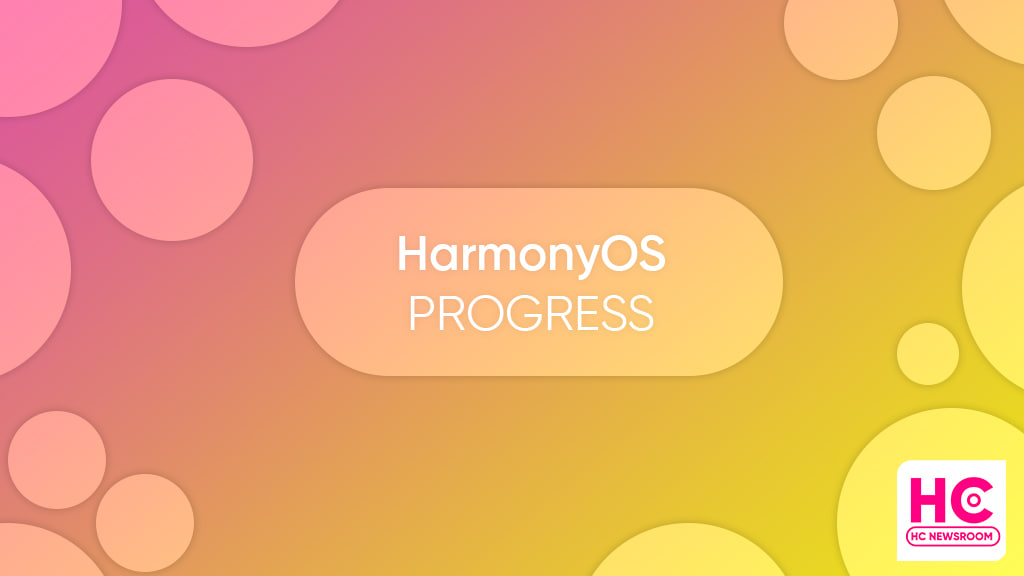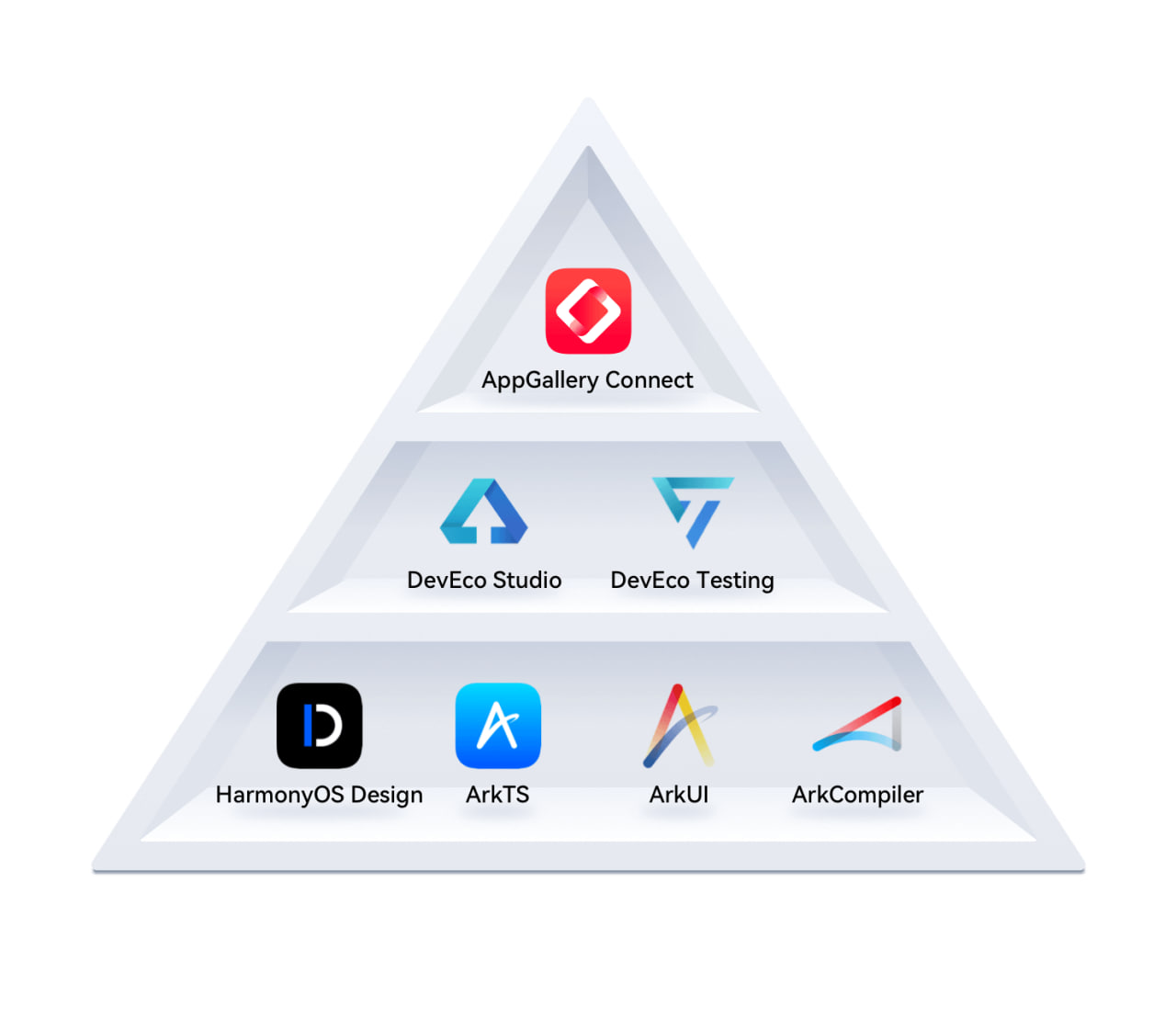HarmonyOS
Huawei HarmonyOS progressed rapidly over the past three years

Since its launch in 2019, the Huawei HarmonyOS operating system progressed over the past year, the consumers initially experienced this OS in only smart TVs. Then it became available on smart devices with HarmonyOS Connect in 2020, followed by its release in smartphones, tablets, and smartwatches in 2021.
The software design of HarmonyOS allows it to establish cross-device connections between the different devices and made it the fastest-growing smart device software in history.
HarmonyOS is designed around five major scenarios:
- Smart home
- Smart office
- Audio and Video entertainment
- Smart travel
- Health
Over the past three years, Huawei jumped the scale of the installation, as it reached 320 million devices later in 2022. Other than Huawei devices, the HarmonyOS Connect operating system for third-party devices collected 2200 partners, which exceeded over 250 million devices.
HarmonyOS ecosystem developers crossed 2 million and atomic services reached 50000. HMS Core has opened 25030 APIs and nearly 40000 applications. Huawei also ramped up investment in the app ecosystem development.
HarmonyOS continue to bring innovation in innovations in visual, auditory, sign language, and aging-friendly barrier-free services to consumers. It is also a more inclusive, healthier, greener, and more open technology base for the Internet of Everything.
Here are the top known HarmonyOS operating system features:
- Service Widgets
- Atomic Services
- HarmonyOS application
- Discover feeds
- Service Center
- Celia AI voice
- Control Panel
- AppGallery and more.
HarmonyOS development strategies:
- HarmonyOS 1+8+N
- Device partner service platform system
Development platform and notable frameworks:
- HarmonyOS Design
- ArkTS
- ArkUI
- ArkCompiler
- AppGallery Connect
- DevEco Studio
- DevEco Device Tool
- DevEco Service
- HMS
- Cloud
- AI and more.
Development Kit:
Huawei launched the “HarmonyOS Ecosystem Application Development White Paper V1.0” last year alongside three concepts for the development of applications and services in the Internet of Everything era.
This includes one-time development and multi-device deployment, that is, a set of code, business logic, and UI adaptation to different smart devices. With such functionality, Huawei HarmonyOS progressed two steps further in the world of app ecosystem development.

Atomized services can be separated or combined, and self-transfer. HarmonyOS and OpenHarmony are using a unified ecosystem to adapt application-native smartness, embrace a tripartite framework, open service capabilities from bottom-level chips to upper-layer applications, and bring users a smart experience.
In near future, HarmonyOS will continue to evolve based on the declarative development system and the three major concepts to develop the HarmonyOS application ecosystem in all aspects.
Huawei switched the declarative development system end-to-end from design > development > testing > launch, and upgraded the application development kit to the “HarmonyOS Development Kit”.
The HarmonyOS development kit also includes a complete application development and operation system: Design system, development language, UI system, compilation tools, development tools, testing services, and on-shelf distribution.
HarmonyOS Design covers comprehensive full-scenario design specifications, rich design resources, and design tools to help developers improve development efficiency.
ArkTS is the development language for HarmonyOS ecosystem applications. Based on TypeScript (TS for short), it provides corresponding capabilities such as declarative UI and state management, allowing developers to develop high-performance applications in a more concise and natural way.
ArkTS is a more concise and efficient JS/TS language “superset”, which further reduces the amount of cross-terminal application development code and improves development efficiency by 30%.
ArkTS provides a concise and efficient declarative development paradigm by extending mature languages and combining grammar support for ArkUI. Combined with the design of UI components, state management, and other aspects, it unifies the development paradigm of HarmonyOS ecological applications.
ArkUI Framework ArkUI is the native UI development framework of the HarmonyOS ecosystem. The ArkUI rendering mechanism upgrade, the unique rendering three-tree integration technology, greatly simplifies the interface rendering algorithm and increases the sliding loading speed of the application interface by 45%.
The innovative stage development model standardizes the background process startup mechanism during the development stage, fundamentally solving the problem app lag issue. The logic and UI separation technology further improves the efficiency of flow development.
The Ark tool chain ArkCompiler compiles and runs mechanism optimization to bring the industry’s first dynamically typed language bytecode AOT compilation technology, which greatly shortens the startup time of dynamic type language applications.
At the same time, it provides a variety of source code protection technologies to improve the security of dynamically typed language source code. The integrated development environment Huawei DevEco Studio is an integrated development environment for the HarmonyOS ecosystem, providing one-stop applications and atomic service development capabilities.
Specific features include project management, code editing, interface preview, compilation and construction, code debugging, performance tuning, device simulation, command line tools, and integrated development of devices and clouds.
DevEco Testing is a testing tool for HarmonyOS application development. The test layered model of the HarmonyOS ecosystem application and atomic service is divided into the unit test, integration test, and special test.
Unit tests are function-level verification. Integration testing is divided into module testing and feature testing. The special test is a multi-dimensional test of the application/service, including a full range of quality checks, and also provides special automated tests such as performance, power consumption, stability, compatibility, UX, and security.
HUAWEI AppGallery Connect provides developers with globalization and full-scenario one-stop application distribution capabilities, and provides developers with capabilities in the fields of quality, security, and engineering management, which greatly reduces the difficulty of application development and operation and maintenance, improves version quality, and helps developers or acquire users and achieve scale growth in revenue.
Specifically, it includes rapid listing, certificate issuance, unified uploading of the package body, description information, materials, listing review, application distribution, and more.
Huawei HarmonyOS progressed the basis for the rapid and healthy development of the HarmonyOS ecosystem powered by these tools and development environment.
Open Source HarmonyOS – OpenHarmony:
An operating system could do better if it’s closed source but it could do even better if it’s open source and Huawei knew that from the beginning. That’s why the tech maker opened HarmonyOS for the open-source community.
OpenHarmony is now ranked first on open source community Gitee with 5,000+ community contributors, 88+ commercial devices, 26+ releases, 84+ module development boards, 16,000+API, and 198 products from 65 manufacturers that passed compatibility evaluation.
OpenHarmony project has been used in education, finance, smart home transportation, and digital government work and continues to expand among various parts of the tech industry.
Future:
As you can see, HarmonyOS has progressed better than expected but it’s just the beginning and Huawei is continuously seeding this operating system with all the nourishment required.
To achieve goals, Huawei is putting efforts in the fields of technological innovation, capability openness, industrial cooperation, and open source promotion. Innovative technologies provide users with innovative experiences.
Simultaneously, Huawei HarmonyOS is open to all developers and ecosystem participants creating many possibilities. A brand new HarmonyOS ecosystem world is being rapidly constructed and continuously upgraded.
Huawei is actively achieving new milestones with HarmonyOS and we’ll continue bringing you those inputs on every footstep.







